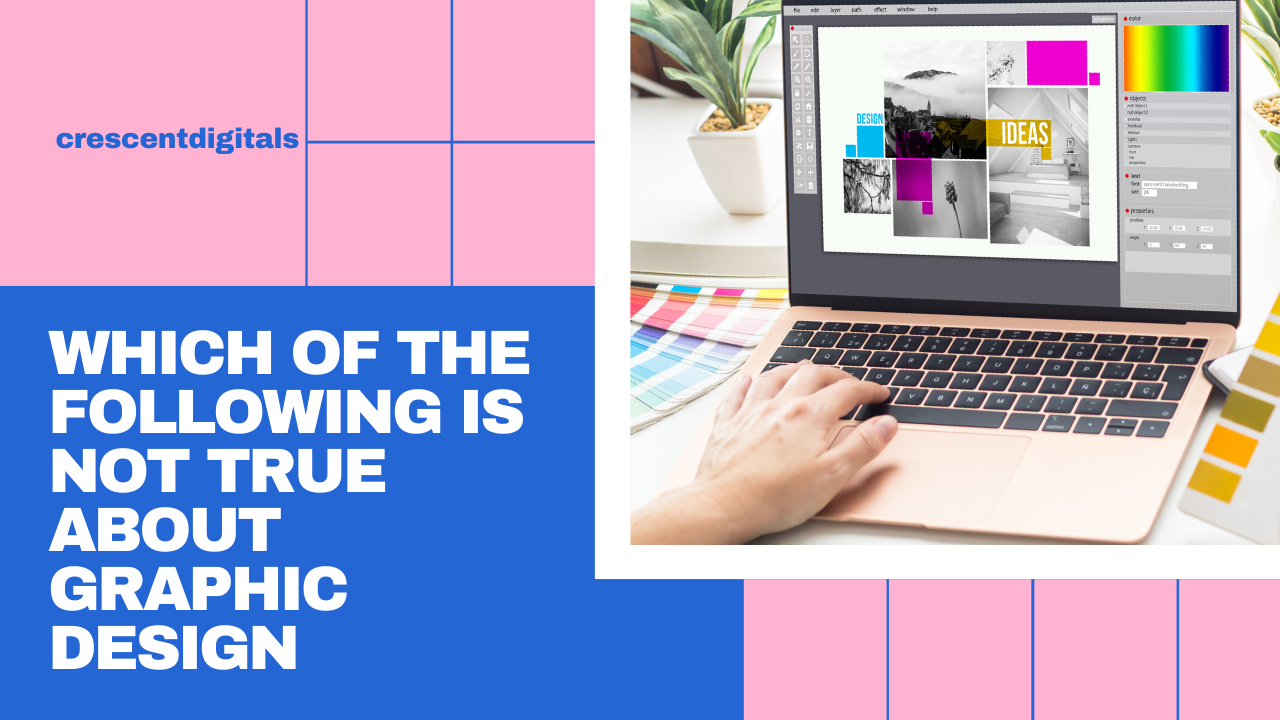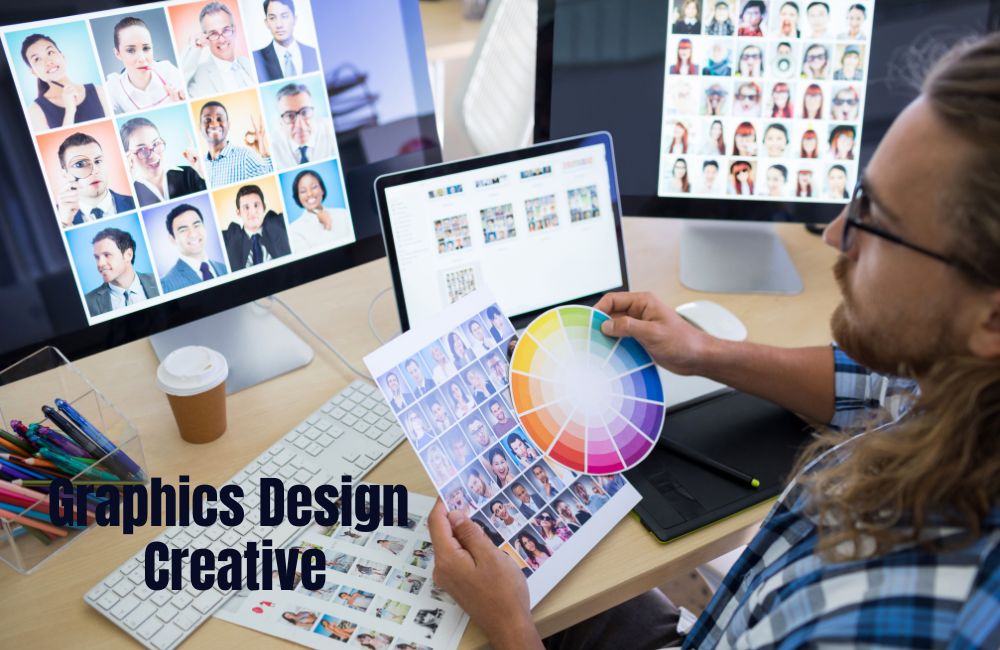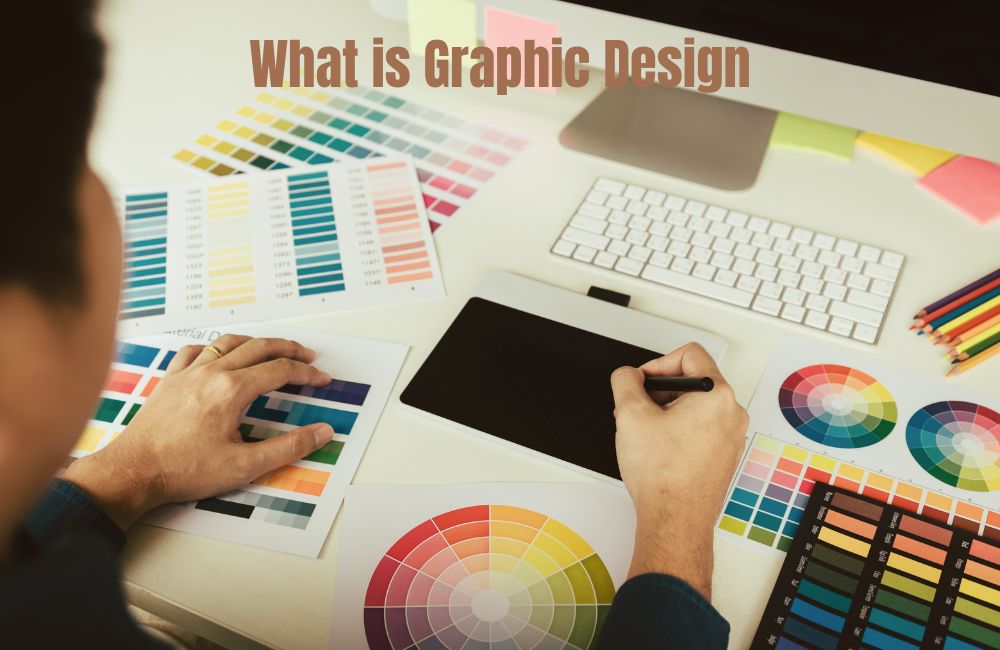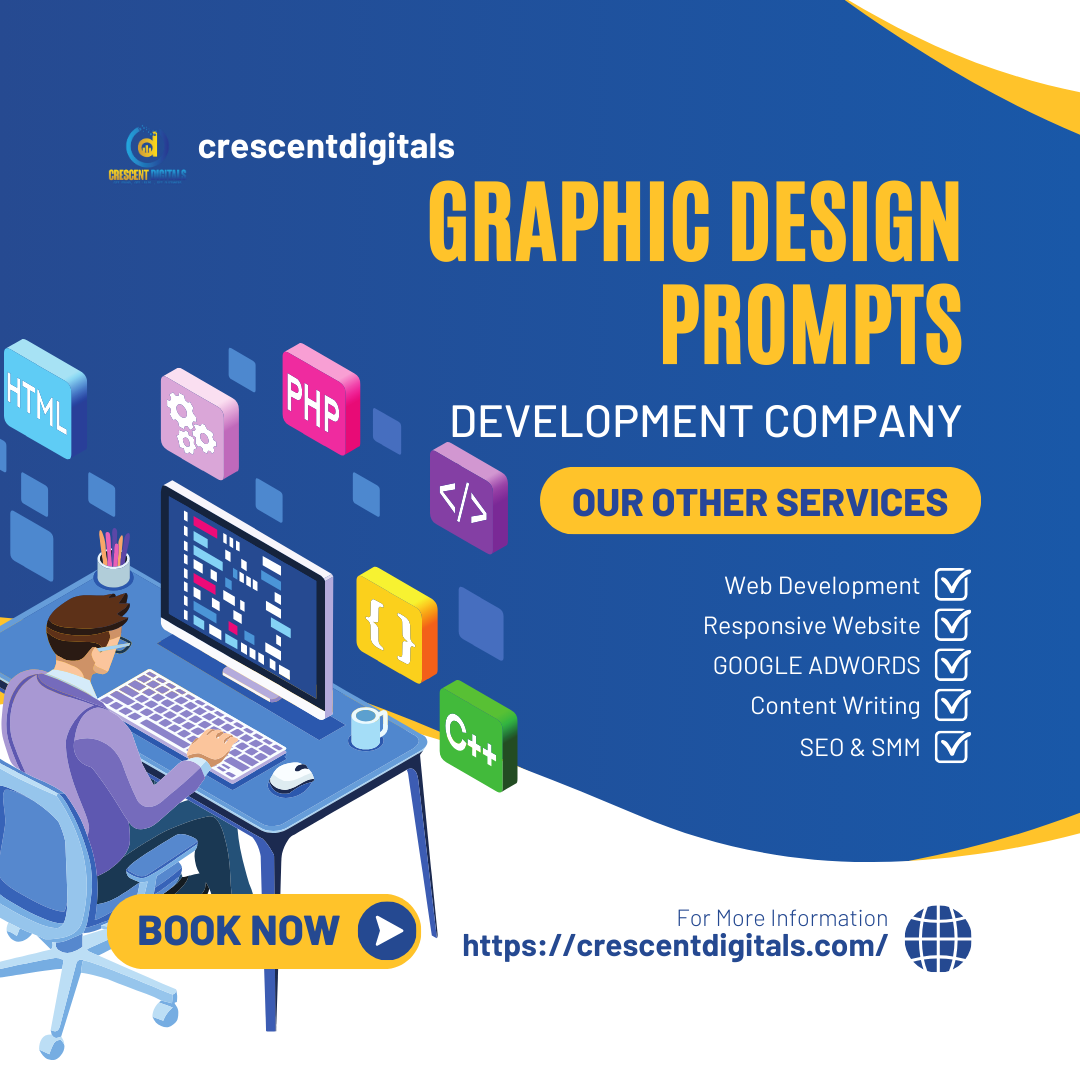Which of the Following is Not True About Graphic Design? Graphic design does not require the use of only digital tools and software. It is not true that graphic design is solely a modern practice.
Graphic design is a dynamic and ever-evolving field that combines creativity with technology to communicate ideas visually. It encompasses a variety of disciplines, including typography, illustration, and layout, and can manifest in both print and digital forms.
The history of graphic design stretches back centuries, transcending modern digital methods to include traditional hand-rendered forms.
Graphic designers utilize their skills across different industries, crafting compelling logos, websites, advertisements, and more. Their work plays a crucial role in branding, marketing strategies, and overall visual communication.
Aspiring designers and seasoned professionals alike must keep up with current trends and tools to produce effective and aesthetically pleasing work. Understanding this broad and rich field is vital for those interested in pursuing a career within it or for businesses looking to leverage the power of visual design.
Graphic Design Myths Debunked
Welcome to our insightful exploration of graphic design myths! Graphic design is a field surrounded by creativity, precision, and passion. However, it’s also plagued by a series of misconceptions that can skew perceptions and spread misinformation about this intricate profession.
In this segment of the blog, we’ll debunk some of the most common myths, setting the record straight on what graphic design truly entails and what it does not.
Understanding The Common Misconceptions
Graphic design is often clouded by myths that can shape an incorrect understanding of the profession. As we tear down these walls of falsehoods, let’s look at what graphic design is not through the lens of clarity and truth.
- Myth: Graphic design is just about making things look pretty.
- Truth: While aesthetics are important, graphic design is primarily about effective communication and problem-solving through visual means.
- Myth: Anyone with design software can be a graphic designer.
- Truth: Proficiency in design goes beyond software knowledge; it requires an understanding of design principles, creativity, and experience.
- Myth: Graphic design is only for marketing and advertising.
- Truth: Graphic design spans multiple industries, from publishing to product design, and is applicable in nearly every sector.
Challenging The Widespread Fallacies
Misinterpretations can hinder the appreciation of graphic design’s full potential. Let’s confront and challenge these widespread fallacies head-on.
| Fallacy | Reality |
|---|---|
| Graphic design is easy and requires little effort. | Professional graphic design demands a significant investment of time, study, and practice to create impactful visuals. |
| Graphic design is a solitary job. | Designers often collaborate with other professionals such as writers, marketers, and product managers. |
| Graphic designers are just artists. | While artistic skills are beneficial, graphic designers are strategic communicators who solve visual challenges for specific goals. |
In conclusion, graphic design is a multifaceted profession that transcends the creation of visually appealing elements. It is a blend of strategy, skill, and science that requires an in-depth understanding of communication, user experience, and branding.
By shedding light on these myths, we hope to foster a better appreciation of the artistic discipline and practical application that is graphic design.
Creative Genius Not Required?
Graphic design often evokes images of individuals bursting with natural talent and creativity. While creativity is a component, the idea that you must be a born artist to succeed in graphic design is a misconception. This section will dispel the myths surrounding the need for innate genius in the field, instead focusing on the tangible qualities that contribute to a successful career in graphic design.
Myth Of The Naturally Gifted Designer
The belief that only those with inherent artistic ability can excel in graphic design is a common misconception. This myth paints an inaccurate picture of the industry and can discourage many from pursuing a career in design. In reality, graphic design is less about natural talent and more about practice, perseverance, and technical skills. Many accomplished designers did not start with an exceptional artistic gift; rather, they worked hard to hone their craft over time.
The Reality Of Skill Development In Design
Cultivating proficiency in graphic design is a journey of continuous learning and skill enhancement. Knowledge of design principles, understanding of typography, color theory, and familiarity with design software are critical components that anyone can learn. The industry demands professionals who are adaptive, possess problem-solving abilities, and can effectively communicate through visual means.
- Consistent practice turns beginners into experts.
- Feedback and critique are essential for growth.
- Technical training is accessible through various platforms.
Success in graphic design does not rest solely on creativity but on a blend of technical knowledge, strategic thinking, and design methodology. It’s an endeavor where anyone with interest and dedication can thrive.
Graphic Design Is Just Making Things Pretty
When someone mentions graphic design, it’s easy to imagine a world of aesthetics and visual appeal. The phrase ‘Graphic Design Is Just Making Things Pretty‘ floats around, conjuring images of sleek logos, beautiful layouts, and vibrant colors.
But is this belief accurate, or does it undermine the true essence and complexity of the graphic design profession? Let’s peel back the layers and reveal what truly lies at the heart of graphic design.
Debunking the superficiality myth
Debunking The Superficiality Myth
The popular myth that graphic design’s sole purpose is to beautify surfaces is a profound misconception. Beyond the surface, graphic design serves a plethora of strategic functions. At its core, it’s about communication and problem-solving through imagery, typography, color, and form.
Designers do not merely rely on their artistic sense; they incorporate user psychology, marketing principles, and business objectives to convey messages effectively.
- User Experience: Designers create intuitive interfaces that enhance user engagement and accessibility.
- Brand Identity: They craft visual identities that reflect a brand’s values, mission, and personality.
- Information Hierarchy: Proper design guides the viewer’s eye and emphasizes critical information.
The importance of visual problem-solving
The Importance Of Visual Problem-solving
Visual problem-solving stands at the forefront of what makes graphic design an indispensable tool for businesses and organizations. We live in a highly visual society where the ability to present information clearly and attractively is paramount.
Designers tackle complex challenges, such as how to make intricate data easy to digest or how to distinguish a brand in a crowded marketplace.
Effective graphic design facilitates:
- Communication that breaks through language barriers.
- The creation of inclusive content that is accessible to diverse audiences.
- User-friendly systems that support seamless interactions.
To illustrate, consider an infographic: it transforms numerical data into visual stories, making the information comprehensible at a glance. When done skillfully, these graphics educate, engage, and persuade, proving that design is not superficial ornamentation; it’s a critical component of successful communication.
Anyone Can Do Graphic Design
Anyone Can Do Graphic Design: Busting the Myth
It’s a common belief that with the right tools, anyone can jump into the field of graphic design. Technology has indeed democratized many aspects of life, and graphic design seems accessible with the myriad of software options available.
Still, is proficiency in design really within everyone’s reach? Let’s discuss the intricacies behind this notion to determine what’s true about graphic design.
The Myth Of Ease And Accessibility
Graphic design software can be downloaded or accessed with ease, leading many to believe that they can become designers simply by mastering these tools. However, having a paintbrush does not make one an artist, just as possessing a hammer does not transform someone into a skilled carpenter.
Graphic design is more than just the ability to use software; it encompasses a deep understanding of visual communication and design principles, which are not innate to every individual. Consider the following:
- Complex design tools: While user-friendly to some degree, professional design programs come with a steep learning curve.
- Creative sensibility: A successful design requires a keen eye for aesthetics, which is not inherent to everyone.
- Technical knowledge: Beyond the software, a designer must be versed in resolutions, file formats, and printing specifications.
Role Of Training And Experience
Mastering the art of graphic design is a journey. Training plays a critical role in refining one’s skills and honing their creative capabilities. Experience allows designers to navigate complex projects and anticipate potential issues with production and execution. Key points to consider include:
| Training | Experience |
|---|---|
|
|
The journey from novice to professional designer is paved with continuous learning and real-world practice. Professional designers invest countless hours into their craft, often engaging in formal education and ongoing training to stay ahead of the curve.
Whether through academic institutions, online courses, or self-teaching regimes, the requisite dedication goes beyond merely ‘doing’ graphic design; it is about mastering it. Experience allows graphic designers to perfect their technique, understand client needs, and deliver compelling visual solutions that stand out in a competitive marketplace.
Graphic Design Myths Impacting Business
Graphic design is a pivotal aspect of modern business, entwining art and technology to communicate ideas. Yet, misconceptions abound, influencing how companies perceive its value. These myths can skew client expectations and undermine the vital role of design in branding and marketing. Let’s debunk common fallacies to realign our understanding of graphic design’s true impact on business success.
Misconceptions affecting client expectations
Misconceptions Affecting Client Expectations
Expecting quick fixes or instantaneous results in graphic design is a prevalent myth. Clients often underestimate the time and effort required to create compelling visuals. This can lead to unrealistic deadlines and pressure on designers to compromise on quality.
- Quality takes time: Crafting a well-conceived design involves research, concept development, and iterations.
- Strategic approach: Instead of rushing, building a cohesive design strategy ensures the final product aligns with the brand’s goals and message.
Another widespread myth is that anyone with the right tools can produce professional designs. This belief devalues the expertise and creativity that seasoned designers bring to the table.
- Specialized skills: Professional designers have trained eyes for aesthetics, understanding of typography, color theory, and user experience.
- Experience matters: Effective design requires more than software proficiency; it’s about problem-solving and communication.
The value of design in branding and marketing
The Value Of Design In Branding And Marketing
Graphic design is more than just creating pretty pictures; it’s an essential business investment. A brand’s visual identity speaks volumes before a single word is read. Thus, its importance in branding and marketing cannot be overstressed.
| Element | Role in Branding and Marketing |
|---|---|
| Logo | Embodies the brand’s essence and is the cornerstone of brand recognition. |
| Website Design | Shapes the online user experience, influencing customer perceptions and decisions. |
| Marketing Materials | Reinforces brand messaging and stimulates audience engagement through visual storytelling. |
First impressions count, and in the digital age, they happen at lightning speed. Exceptional design differentiates brands in crowded markets, fostering trust and credibility with the target audience.
- Consistent identity: A unified design language across all platforms reinforces brand recognition.
- Emotional connection: Thoughtful design evokes emotions, creating a lasting bond between the brand and the customer.
Ultimately, dismissing the importance of graphic design can be a costly mistake for businesses. Its influence on branding and marketing is profound, driving engagement, loyalty, and ultimately, business growth. Investing in high-quality design services translates to investing in the company’s future.
“which Of The Following Is Not True About Graphic Design?” Uncovered
Welcome to the intriguing world of graphic design myths and misconceptions. Often, people form beliefs about graphic design that don’t exactly line up with reality. This can impact not only how clients interact with designers but also how aspiring artists approach the field.
Let’s demystify some common false statements and unearth the truths behind them, ensuring both clients and designers are on the same page and can collaboratively produce captivating visual content.
Myth: Graphic Design Is Only About Making Things Look Pretty
One widespread fallacy is that graphic design’s sole purpose is to beautify. This is far from the full story. In reality, design intertwines aesthetics with functionality, ensuring that the visuals not only attract attention but also communicate the desired message effectively and enhance the user experience.
Myth: Anyone With Design Software Can Be A Graphic Designer
Another common misconception is equating the availability of design tools with the capability to produce professional work. True graphic design encompasses a blend of theory, creativity, technical skill, and an understanding of marketing and psychology, elements that software alone cannot provide.
Myth: Graphic Design Is A Single-discipline Field
Graphic design is erroneously viewed by some as a monolithic career path focused on a single aspect of design. In contrast, graphic design is incredibly diverse and multidisciplinary. It includes subfields such as branding, web design, typography, print design, and more, each with its unique skill set.
Truth: Graphic Design Solves Communication Challenges
At its heart, graphic design is about problem-solving. Designers must translate complex ideas into straightforward visuals that convey messages succinctly and powerfully. It’s a blend of art and strategy that requires analytical thinking just as much as it does creativity.
Truth: Professional Graphic Design Requires Training And Experience
While design software is more accessible than ever, professional graphic design demands formal education and/or significant practical experience. Designers hone their skills over time through real-world projects and continual learning to keep up with evolving trends and techniques.
Truth: Graphic Design Has Many Subfields And Specializations
- Branding – Creating a visual identity for companies and products
- UI/UX Design – Designing user interfaces and experiences for digital products
- Print Design – Crafting materials for print media, such as brochures and posters
- Illustration – Providing custom artwork for various applications
Graphic design’s vibrancy as a field lies in its range of specializations. Designers often focus on specific areas, developing their unique styles and expertise over time.
Demystifying the misconceptions surrounding graphic design allows for a deeper understanding and appreciation of the craft. Recognize that design is a multifaceted profession where creativity meets functionality, giving rise to visual solutions that shape our world’s visual landscape. Respect the craft, seek the experts, and celebrate the nuance that is graphic design.
Frequently Asked Questions For Which Of The Following Is Not True About Graphic Design
Is Graphic Design Only About Visuals?
Graphic design encompasses more than just aesthetics; it integrates functionality, user experience, and effective communication within its creative solutions.
Does Graphic Design Require Drawing Skills?
While helpful, drawing skills are not mandatory for graphic design; modern software and technology offer alternative ways to create compelling visuals.
Is Graphic Design A Solitary Profession?
Graphic designers often collaborate with clients, marketers, and other designers to create cohesive projects, making it a collaborative field.
Can Graphic Design Be Self-taught?
Yes, with a plethora of online resources, tutorials, and courses available, graphic design skills can be self-taught.
Is Graphic Design Software Expensive?
Not necessarily, as there are free and open-source graphic design software options alongside professional paid programs, catering to various budgets.
Is Graphic Design Only For Print?
Graphic design spans both print and digital media, including websites, apps, and social media content, not limited to traditional print assets.
Does Graphic Design Evolve With Trends?
Graphic design is dynamic and constantly evolves, reflecting cultural shifts, technological advancements, and new trends in visual communication.
Do Colors Affect Graphic Design Effectiveness?
Color psychology plays a crucial role in graphic design, influencing perception, emotions, and actions, thus affecting the overall design impact.
Are Graphic Designers Also Web Developers?
Graphic designers focus on visual elements, while web developers handle coding; however, some professionals have skills in both areas.
Is Graphic Design Limited To Advertisements?
Graphic design is versatile, extending beyond advertisements to encompass branding, web design, product packaging, and various other visual communication forms.
Conclusion of Which of the Following is Not True About Graphic Design
Graphic design myths can mislead and confuse newcomers. Our blog debunked several common misconceptions, fostering a clearer understanding. Remember, staying informed is crucial in the evolving world of design. Keep learning, and don’t hesitate to challenge the status quo with creativity and innovation.
Let’s design the future with truth as our guide.






